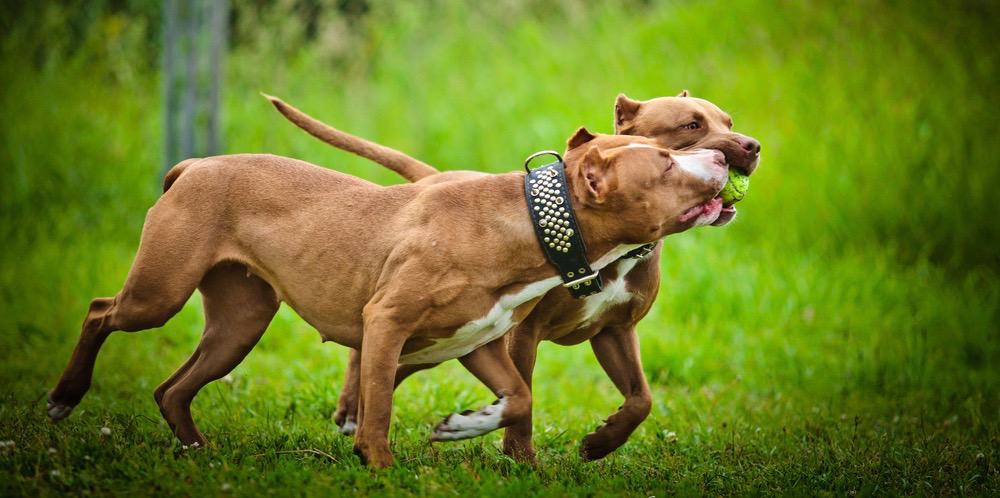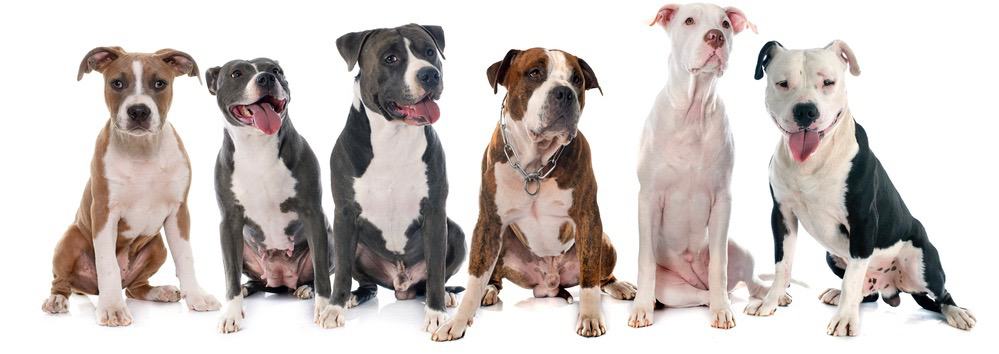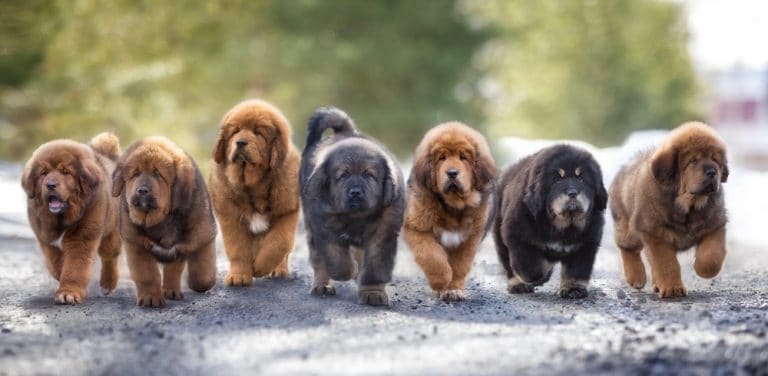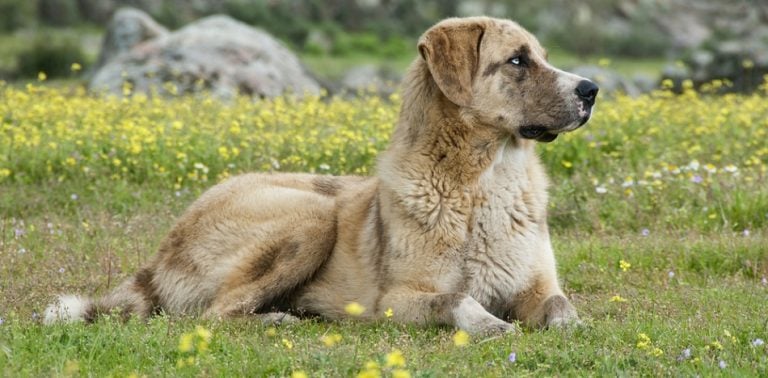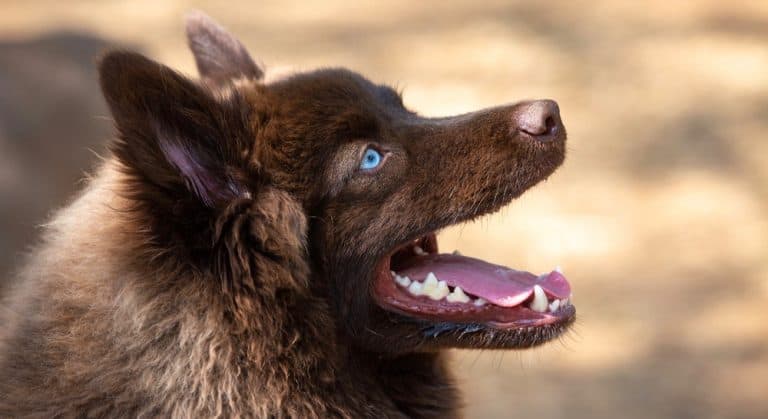Pitbull Growth Chart (Size & Weight Chart) – When Do Pitbulls Stop Growing?
There’s no denying it. Few things can be as cute as a pitbull puppy, and few dogs can boast the athletic physique of a full-grown Pitbull.
Our pitbull growth chart will help you to follow and predict your pup’s development to adulthood. We hope it will add to the fun of being a proud pitbull “parent!”
We’ll also deal with a few frequently asked questions such as “When do Pitbulls stop growing?”
It’s a question many Pitbull parents may ask – especially when they see their cute little one growing so fast you can almost see it happening!
We’ll also touch on a few facts about pitbull genetics, behavior, and nutrition.
Do you have what it takes to bring out the best in your pitbull? Our guide will be a good tool for prospective pitbull owners who are considering their breed options as well as those of you who are already raising a pitbull pup.
When Do Pitbulls Stop Growing?
This post contains affiliate links, and I will be compensated if you make a purchase after clicking on my links.
However, the answer to “When do Pitbulls stop growing?” is a little more complex than our pitbull growth chart may lead you to believe.
While your dog is as tall as it is likely to get within one year, it will continue to bulk out for some time.
In general, we can say that ultimate weight is only reached at about the age of two or three years.
Pitbull Size Chart

This easy-to-use pitbull size chart lists the average weight of Pitbulls during the first 12 months of their development.
Please remember that Pitbulls are a variable breed, so some dogs may fall outside the average parameters.
Provided your dog is in good health, you can use the percentages of weight gained during growth to adjust the averages and more accurately reflect what you can expect of your particular dog.
Female Pitbulls are smaller and have a lighter build than males, so use the columns for male and female animals in accordance with your pet’s gender.
While your pitbull is a puppy, you can easily estimate its weight by weighing yourself, then picking up the pup and weighing both of you together.
The difference between the two weights will be a fairly accurate measurement.
If you’d like to check on the height at the same time, remember that animals’ height is measured at the shoulder rather than the head.
Use a comparison with your own body to gain an idea of what size your pitbull is.
Pitbull Weight Chart
| Age | Male | Female | Total % |
|---|---|---|---|
| 1 month | 9.2 lb - 4.2 kg | 7.2 lb - 3.3 kg | 12.1% |
| 2 months | 19.9 lb - 9 kg | 16.6 lb - 7.5 kg | 26.18% |
| 3 months | 31.3 lb - 14.2 kg | 26.7 lb - 12.1 kg | 41.18% |
| 4 months | 41.8 lb - 19 kg | 36.2 lb - 16.4 kg | 55% |
| 5 months | 50.6 lb - 22.9 kg | 44 lb - 20 kg | 66.57% |
| 6 months | 57.4 lb - 26.1 kg | 50.1 lb - 22.7 kg | 75.52% |
| 7 months | 62.6 lb - 28.4 kg | 54.4 lb - 24.7 kg | 82.36% |
| 8 months | 66.4 lb - 30.1 kg | 57.5 lb - 26.1 kg | 87.36% |
| 9 months | 69.4 lb - 31.5 kg | 59.7 lb - 27.1 kg | 91.31% |
| 10 months | 72 lb - 32.7 kg | 61.5 lb - 27.9 kg | 94.73% |
| 11 months | 74.3 lb - 33.7 kg | 63.1 lb - 28.6 kg | 97.76% |
| 12 months | 76 lb - 34.5 kg | 64.2 lb - 29.1 kg | 100% |
Pitbull Growth Chart – How Much Should A Pitbull Weigh?
Birth – 3 Weeks
Like other dogs, newborn pitbull pups can neither see nor hear. Their eyes will be completely closed and they will be toothless. They find their mom by feel, and they are not yet ready for play and interaction.
During this growth phase, a pup’s only priorities are feeding, sleeping, and growing.
At about two weeks, something magical happens! The puppies’ eyes begin to open! At three weeks, your pups begin to hear sounds and will begin to make proper barking noises themselves.
You’ll also notice little white points coming through their gums as their first milk teeth begin to appear.
3 Weeks – 7 Weeks
While newborns are focused on physical development, they start receiving and learning from inputs from the world around them during this stage of their growth.
Pitbulls who are properly socialized make great pets, and this stage of their learning is vitally important. Pitbull pups will learn from their mom, their littermates, and from interactions with you.
However, although the little ones are becoming more active, they are still babies. Keep your input positive and remember that they aren’t being naughty if their attention tends to wander.
It will help if your pitbull puppy gets a chance to play with people other than you including family members and friends.
The weaning process begins, and you can take some of the pressure off mommy pitbull by providing puppy food. By the age of seven weeks, you have a pup who barks, plays, wags his tail, and eats solids.
7 Weeks – 12 Weeks
In theory, you can home out a pitbull at seven weeks, but 10 weeks will give him a better chance to develop into a well-adjusted dog.
Socialization becomes even more important, and puppy classes provide a great opportunity for your pitbull puppy to meet other dogs and their owners.
If you decide to train your pitbull yourself, do invite people around to meet him and look for opportunities where your pitbull puppy can enjoy play with dogs outside of the family circle.
The message that you want to get across is that other people and animals are not a threat and not “prey.”
With the right treatment during these crucial weeks, you will stand a good chance of having an easygoing Pitty that can be trusted around kids, guests, and other animals he may meet.
3 Months – 4 Months
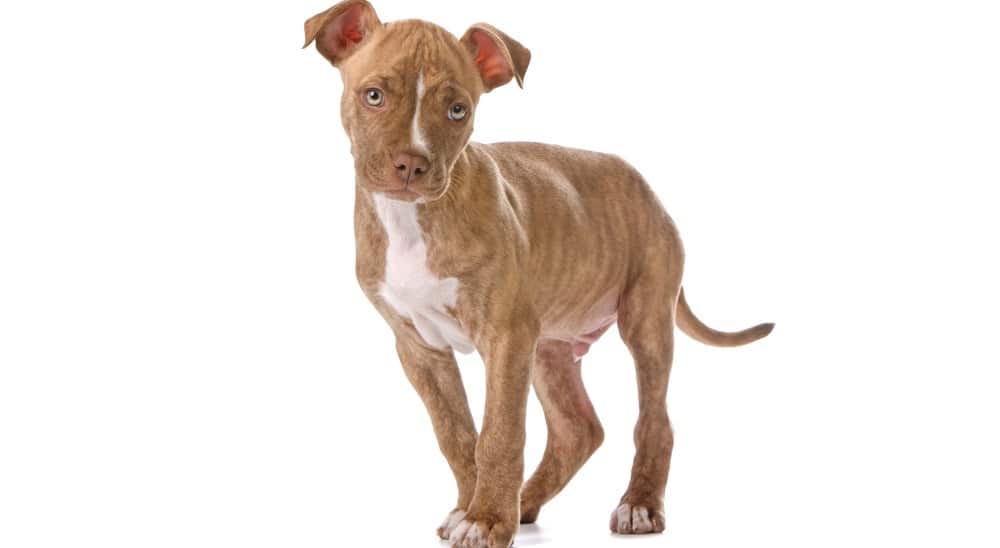
Uh oh! This growth stage is equivalent to human teens and tweens. You guessed it! Your pup is going to test his boundaries and may seem genuinely naughty at times. Training is more important than ever now.
Doggie school is the best option for training Pitbulls, and for teaching their owners how to cope with an active pitbull youngster.
If you are training at home, consult as many sources as you can and try to keep training a positive experience even though you may find yourself becoming impatient at times.
Your pup is teething once again – this time exchanging milk teeth for permanent teeth, so chewing is to be expected. Keep things you don’t want to be chewed away from your pup and provide lots of chewy toys to deal with those itchy pitbull gums!
4 Months – 10 Months
Your pitbull has been growing fast, and it will continue to do so during this developmental stage. It’s around now that interested pet owners start asking “How long do Pitbulls grow?”
After all, their tiny puppy has come a long way and there seems to be no end of growth still to come.
Keep up the training and be firm about discouraging “mouthiness” or chewing of people. During this time the range of your commands your dog can understand becomes greater, so don’t neglect regular practice sessions.
At about six months, it’s time to spay or neuter. Yes, puppies are cute, but you don’t want males wandering or getting into dogfights.
As for the females, unwanted puppies are a real problem, and a lot of the health issues that can shorten its lifespan can be avoided if you spay your dog in good time.
10 Months – 1 year
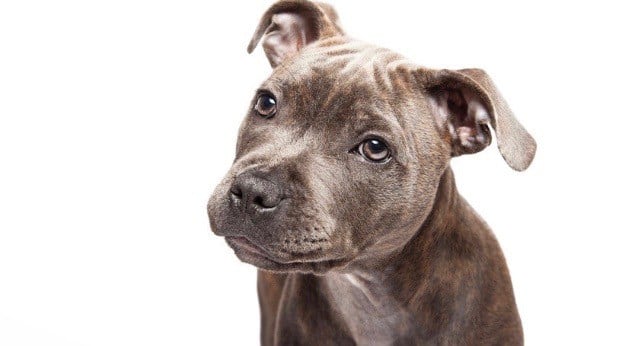
By now, your pitbull is starting to look like an adult dog, but it is still a puppy at heart. Reprimand your dog with your tone of voice rather than physical discipline and reinforce good behavior by providing yummy treats and lots of attention.
Regular exercise and lots of room to let off steam are especially important. Bored pitbulls with no outlet for their energy will be very inclined towards bad behavior.
Dog walking and games of fetch are a great way to keep your dog happy and entertained. Ensure that there is plenty of garden space for free play – your dog has far more energy than you do!
Adult
Once your dog is over a year old, you can safely call it an adult Pitbull, but it is still gaining bulk in the form of muscle. The changes are slower now, but good nutrition remains a priority.
Choose a good adult dog food and make a gradual transition between puppy and adult food by mixing the two at first and then reducing the amount of puppy food in the mix over time.
Throughout his or her life, your pitbull will need training and opportunities to socialize to keep it well-adjusted and easy to live with.
Exercise and space to run and play will remain important all the way through to your pitbull’s golden years when its habits will gradually become more sedentary.
How Big Do Pitbulls Get?
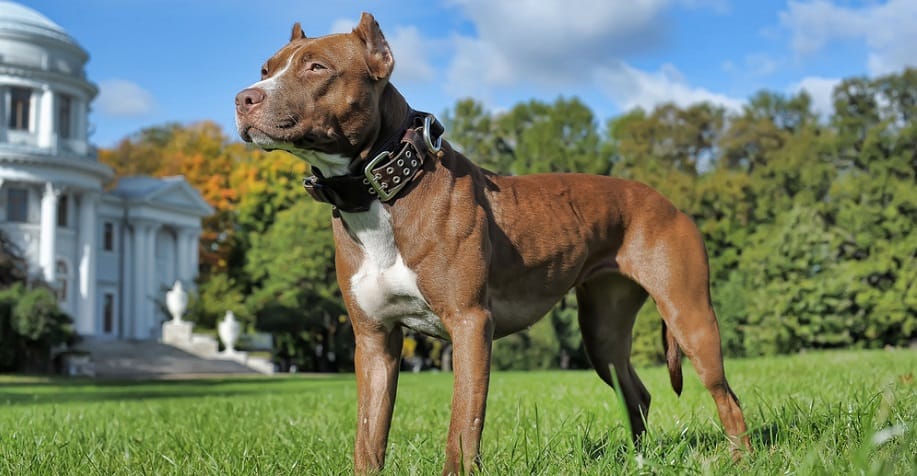
It is common to wonder how big do Pitbulls get. You should first consult with a Pitbull weight chart to get an idea as to where your dog should wind up in height and weight.
If you know the dog’s biological parents, looking at their size will also be a huge indicator of what you can expect. Dog paws are also looked at to see how big your dog will have to get to be proportional with his feet.
Finally, you can have a DNA test done since some of them will also help with size guesses.
When Is A Pitbull Fully Grown?
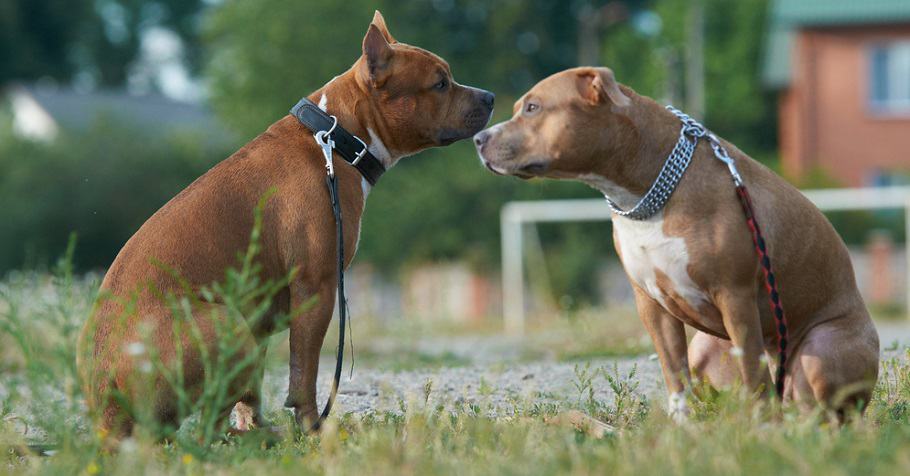
Looking at your Pitbull puppy, it might be hard to imagine him as a fully-grown adult dog. But, they do grow up. A Pitbull is a little bit unusual in that they do take longer to reach their final size than other dogs of their size.
They should be done growing in height between a year and 18 months of age. They can still continue to gain weight until they are 3 years old, however.
It is common for dogs to reach their final height before their final weight, but 3 years to gain weight is less common and usually only applies to giant dog breeds.
Pitbull vs American Bully Size
The weight and height of both breeds are different. American Bullies are smaller while Pitbulls are bigger.
Male Pitbulls weigh between 30 to 90 pounds with a height of between 18 and 21 inches while the female Pitbulls weigh between 30 and 50 pounds with a height of around 17 and 20 inches.
On the other hand, American Bullies are shorter than Pitbulls, but they have more muscles hence weigh more.
Male and female American Bullies weigh between 30 to 150 pounds. The females have a height of around 16 to 19 inches while the males have a height of around 17 and 20 inches.
How Big Is A Pitbull Puppy When He Is Born?
The weight of a newborn Pitbull puppy depends on the number of siblings in the litter and the size of the mother.
But the average weight for a newborn Pitbull puppy is between 7 and 10 ounces.
The eyes and ears of newborn Pitbulls are not yet opened but their front paws have enough strength to pull themselves to the mother.
They cannot regulate their body temperature, so they need their mother to keep them warm. They spend most of their time sleeping and eating. Also, their only source of nutrition is the mother’s milk.
How Big Should A 6-Month-Old Pitbull Be?
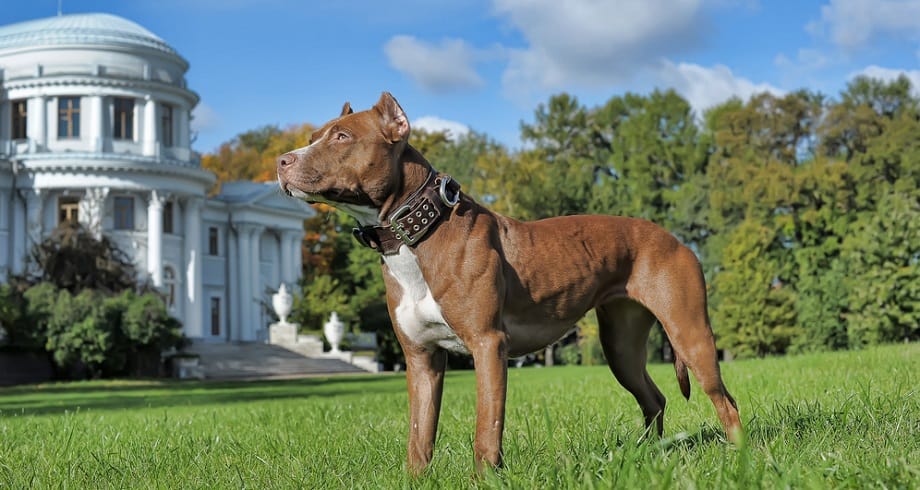
At the age of 6 months, a female Pitbull weighs between 15 and 30 pounds while a male Pitbull weighs between 20 and 30 pounds.
These numbers are just estimates and your puppy will grow at their rate.
Speak to your vet to know exactly how much your puppy should weigh because they have enough information
This is the age where your Pitbull is full of energy, meaning that you should give them enough exercise to keep them occupied.
Ensure that you do not overexercise your puppy to prevent joint issues in the future. This is the age to speak to your vet about spaying or neutering your Pitbull.
Will Neutering/Spaying Affect My Pitbull’s Growth?
While the old standby was that you would spay or neuter your puppy when he was 6 months old, there have been more recent studies that have told us otherwise.
Naturally, you will want to have your dog spayed or neutered in order to prevent unwanted pregnancies and avoid health issues, the timing of the surgery can vary a lot.
In recent years, it has become recommended to wait to spay or neuter large breed dogs until they have finished growing.
While spaying and neutering does not stunt your dog’s growth, it has been shown to affect the growth plates in large breeds, so you will want to wait until your Pitbull has finished growing before having the surgery done.
Is Pitbull A Medium Or Large Dog Breed?
The final size of your Pitbull will determine whether they are a medium or large breed. Pitbulls range from small-sized to medium-sized, but some of them are considered large size.
If their weight is less than 50 pounds, then they are medium-sized dogs, but the weight is more than 50 pounds then they are large-sized dogs.
Therefore, the final weight of your Pitbull will determine their size.
What Is A Pitbull’s Neck Size?
Knowing your Pitbull’s neck size is so important when it comes to buying collars for him. If a collar is too loose, it will come right off. If it is too tight, that also can be really dangerous and uncomfortable.
To measure your Pitbull’s neck size, use a tape measure and measure around his neck above his shoulders, where his collar will rest.
On average, a Pitbull’s neck can be between 14 inches and 18 inches in size, so make sure the collar you choose matches up to the circumference of his neck.
Pitbull Body Condition Score (BCS)
Keeping track of your dog’s weight is so important to knowing how healthy your dog is. While we might use BMI to keep track of human weight, with a dog, you need to use their BCS or Body Condition Score.
The BCS is not based on your dog’s actual weight, since dog weights vary so much, but it is instead based on what you can see and feel about your dog’s physique.
The BCS works on a scale from 1 to 9. 1 means that a dog is far too thin, underweight, and likely emaciated. A dog at this weight will have muscle loss and ribs protruding.
A 9 is also unhealthy, indicating that your dog is severely overweight with no visible waist and bulging sides.
The ideal BCS is a 5, which means that the dog has a clear and visible waist and the ribs can be felt easily under the fur, but not seen.
How To Help Your Pitbull Lose Weight If He Is Overweight
Having an overweight dog can be incredibly disappointing and discouraging. It can also be tricky to get your pup to shed the extra pounds. If your vet has suggested that your dog is overweight, here are some things that you can try to help him lose some weight.
- Review his food. The first thing to look at is the food that you are feeding your Pitbull. Is it appropriate for a Pitbull? How many fillers are in the food? Is it high in protein? If you know the food is healthy, review how much you are feeding your dog and see if you can cut back slightly.
- Review his treats. Just like with this food, how healthy are the treats that you are giving your dog? Also, make sure that you are not overdoing it on the treats.
- Get him some exercise. How often is your dog getting his exercise? If he is not going on long walks every day, the time to start is now.
Anatomy Of A Pitbull
As previously mentioned, Pitbulls are members of quite a diverse breed. That’s good news since genetic diversity means hybrid vigor and less inclination towards inherited health problems from recessive genes.
The most obvious feature of this dog, and the one that may have contributed to an unfair reputation for viciousness, is its powerful, wide jaw.
A properly raised dog will never turn on his owners, their family, or their friends. So although that jaw has the potential to deal damage it is not a sign of aggression, merely a physical characteristic.
The dog’s build will be stocky and muscular while the short coat makes for minimal mess when your Pitbull is shedding, and low-maintenance grooming. The tail is long, pointed, and whippy – waggy if it is a happy pet!
Factors That Can Affect Pitbull Puppy Growth
Genetics
Depending on the pitbull’s genetics and gender, it will be a medium to large dog.
Since size diversity enters into the mix of pitbull characteristics, knowing the parents of your pitbull will give you a good idea of what to expect from your pup when it is grown up. After all, that’s where genes come from!
Nutrition
No living creature, be it a plant, a person, or a pitbull, will reach its full genetic potential without proper nutrition. The genes are only the basis for what can be achieved.
The fulfilment of that potential has a lot to do with environmental factors and in this instance, nutrition. Puppyhood is the most sensitive stage, so choose a good puppy food as an investment in your dog’s future.
Injury
Any form of physical stress during a puppy’s development can prevent it from reaching its full potential. Injury or illness is no exception.
Of course, any good pet owner will do his or her utmost to prevent their puppy from being injured. However, if your puppy has been hurt, be sure to consult a veterinarian, even if the injury looks mild.
Protect your dog from internal and external parasites, and be sure to keep inoculations up-to-date.
How Long Are Pitbulls Pregnant?
Most pitbulls will be pregnant for 8 to 9 weeks (with some variations). During her pregnancy, do have a vet check out your pitbull to ensure she is healthy. You can also use the opportunity to find out about additional nutrition since she will be eating for more than two.
As her time draws nearer, don’t be surprised if you find her trying to build a nest for herself in some safe corner! This is instinctive, and you shouldn’t discourage her unnecessarily.
If the spot, and the nesting materials, suit you, consider letting her use this space when she gives birth – after all, she chose it herself!
How Many Puppies Do Pitbulls Have?
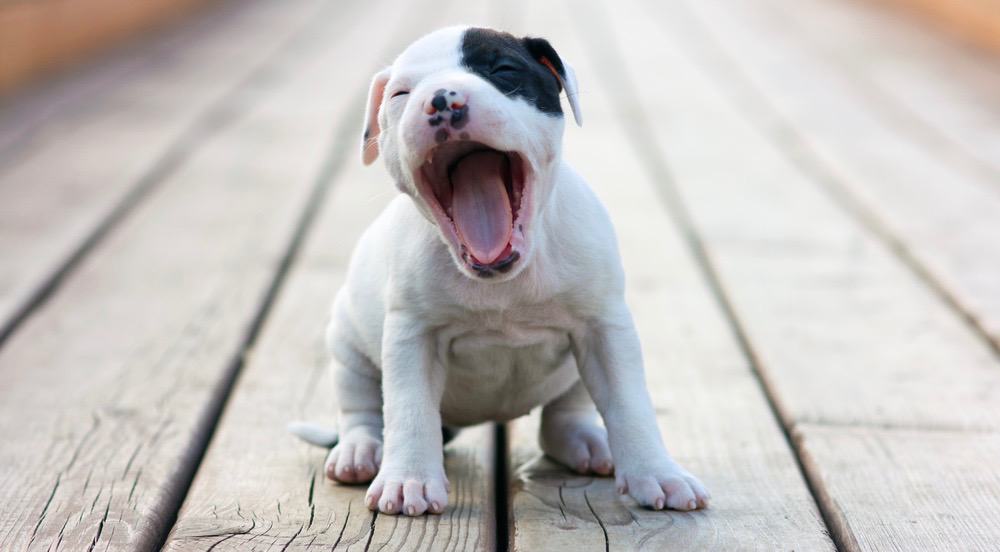
On average, pitbull females will give birth to six puppies, but they can have as many as fourteen at a time. The more puppies there are in the litter, the more vigilant you must be.
For example, stronger puppies may prevent weaker ones from feeding off Mom pitbull. She only has ten nipples, so that’s the maximum she can feed at a time.
Usually, all the little ones will find a turn to feed, but if you suspect that some are not getting their fair share, consult your veterinarian.
If you want to prepare yourself mentally for your pet grandparenthood, ask the vet to give your dog a scan when you take her for her pregnancy checkup.
What If My Pitbull Is Not The Right Weight
Our pitbull weight chart can be used as an indicator of the health of your pitbull. But averages are not absolutes. Your pup or adult pitbull could just be rather larger or smaller than average.
If you are concerned about your dog’s weight, you should also look at its condition. Because of their short coats, it’s easy to see if a pitbull is underweight. You should be able to feel the ribs, but not see them.

The shape of your dog helps to show if he or she is overweight. A healthy pitbull should have a pronounced waist and a firm, muscular physique without too much padding.
If you’re unsure of whether your dog is the right weight, consider a vet’s visit. While it could just mean you need to adjust diet and exercise, it could also be a symptom of hypothyroidism
An underweight dog who is nevertheless eating well could have health issues. An overweight dog has an increased chance of developing health problems. Your vet can help you to make the judgment call.
What Is The Life Expectancy Of A Pitbull?
Pitbull life expectancy is as variable as their genetics. In general, you can count on eight to fifteen years with your doggy friend. A little further on, we will look at common pitbull health problems.
Sadly, if your dog exhibits certain of these ailments, you can look at the lower end of the life expectancy scale.
Broadly speaking, smaller Pitbulls do have the potential to live a little longer than bigger ones, but other factors like diet and exercise will have a role to play.
As a pet owner, you can do your best to extend your pitbull’s lifespan by keeping its vaccinations up to date, providing good quality food, and making sure your dog gets plenty of exercise.
How Much Does It Cost To Own A Pitbull?
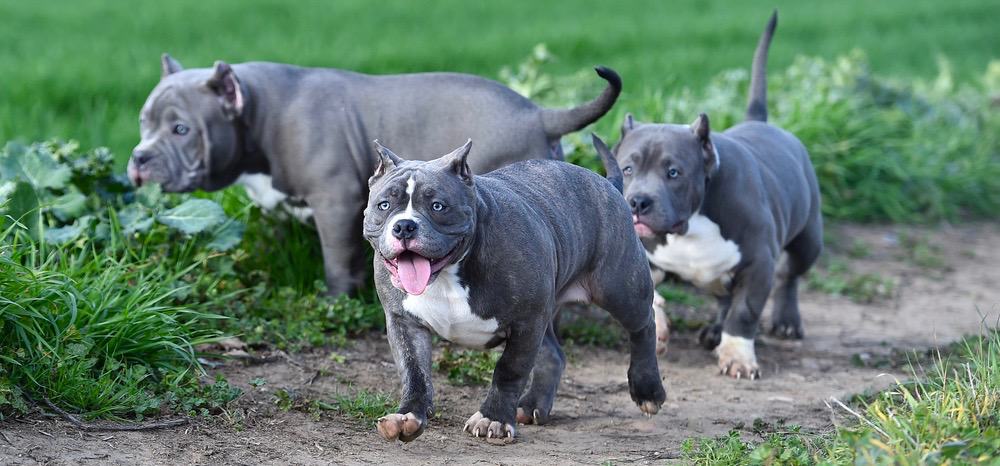
It’s wise to ask the cost of pitbull ownership before committing to one. It will certainly be a lot more than just the cost of getting a pitbull puppy.
A pitbull from a really good breeder who puts time and effort into the selection of bloodlines and the care of his or her dogs may ask anything from $2,000 to $20,000 for a pup.
You can get pitbull pups for less, but you should be aware that this may mean that they do not come from the best bloodlines. They may not be purebred, or they may even have genetic faults that could affect their health.
Keeping a pitbull adds further costs to the equation. Do some thinking before making the final commitment. We highly recommend choosing one of the higher-quality dog foods for your pet.
They really do have superior nutritional value and better quality control. Of course, this comes at a price.
Veterinary costs as well as tick and flea prevention also enter the picture. At the very least, you will be looking at annual checkups and vaccinations, and regular parasite protection, but if your dog becomes ill, costs can run into thousands of dollars.
Preventing tick and flea infestations isn’t just good for your health, it also protects your dogs from parasite-borne diseases. Choose a vet-approved product and not just one-off the supermarket shelves.
There are a lot of variables in all of this, but researchers say that you can expect to spend $153 on your pet every month – and that’s an uneventful month!
Pitbull Genetics and Common Health Problems
Pitbulls were originally bred from bulldogs and terriers, and their genetic weaknesses can be traced back to their ancestry. However, they are generally strong dogs with few health problems – provided you choose a reputable breeder who focuses on good genes.
Hip dysplasia is a common problem across larger, active breeds, and it is inherited. If it is bad enough, it will drastically reduce the amount of time your dog can enjoy life.
Fortunately, puppies can be tested for hip dysplasia and some breeders will provide certification of healthy hips.
An underactive thyroid gland, or hypothyroidism, can also be problematic for pitties. Fortunately, this condition can be treated with supplementary hormones.
Ask your vet to test for thyroid issues if your dog starts to gain weight despite a controlled diet, or gets moody.
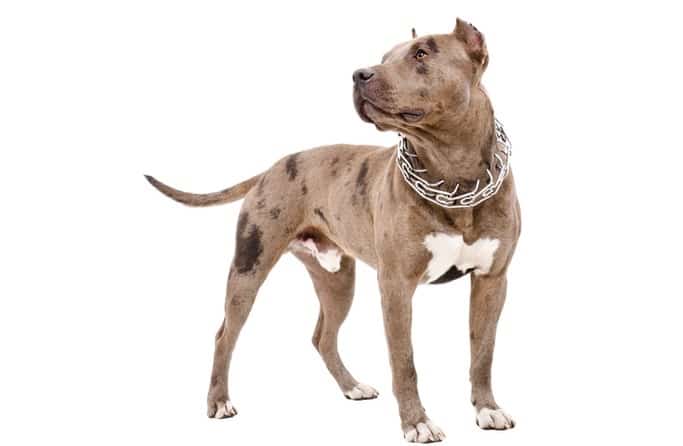 Allergies, sunburn, and skin infections can be a problem too. If you notice sores or skin flakes, be sure to consult your vet to discover and address the cause. Dogs with low pigmentation – those that are white or have a lot of white in their coloring, are more prone to skin problems.
Allergies, sunburn, and skin infections can be a problem too. If you notice sores or skin flakes, be sure to consult your vet to discover and address the cause. Dogs with low pigmentation – those that are white or have a lot of white in their coloring, are more prone to skin problems.
Heart problems are among the issues to have checked out annually. Pitbulls are somewhat prone to this problem, so getting treatment in time can make all the difference.
Cataracts are rather common too. You’ll notice it as a milkiness of the eyes. Fortunately, this condition need not lead to blindness since it is treatable.
Despite this seemingly long litany of ills, many Pitbulls will never develop any of these problems, especially if they are well-cared-for. Overall, the breed is physically strong and likely to deliver a relatively long and happy lifespan in which you can enjoy your time together.




